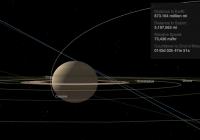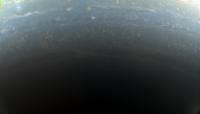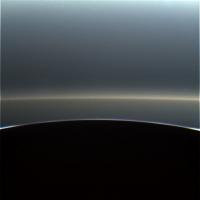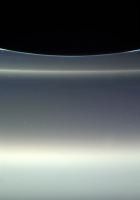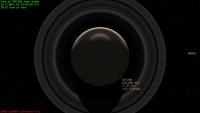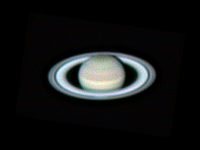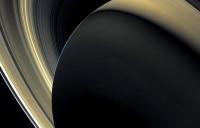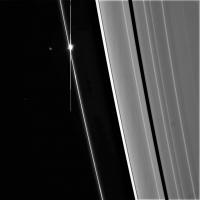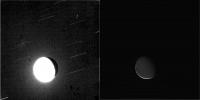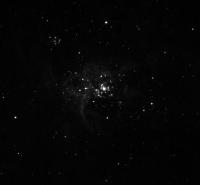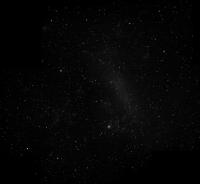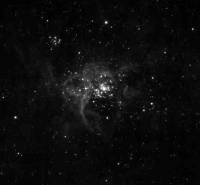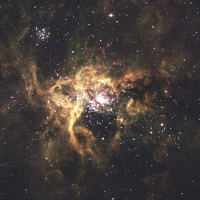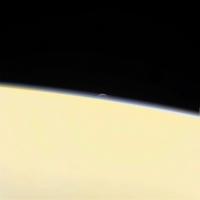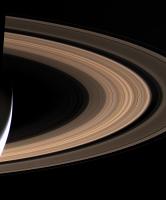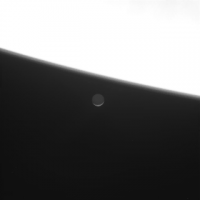Printable Version of Topic
Click here to view this topic in its original format
Unmanned Spaceflight.com _ Cassini's ongoing mission and raw images _ The Grand Finale
Posted by: jasedm Oct 27 2016, 01:34 PM
With a month to go before the F-ring orbits commence, I thought it would be good to open a discussion about what exactly to expect, and the challenges and risks associated with the final months of Cassini's mission.
The final phase has been described as a mission in itself - one that might have attracted funding if it were stand-alone rather than one planned for the end of an already phenomenally successful enterprise.
We will no doubt continue to get regular updates at http://ciclops.org/news/looking_ahead.php?js=1 a resource which has been invaluable to followers of the mission, and which have provided a brilliant insight into upcoming science activities during each orbit, since early 2007 (Thanks Jason).
I'm hoping too ![]() that perhaps Emily may post one of her excellent articles on the TPS blog that give more of an inside track on the science that is planned for the final months.
that perhaps Emily may post one of her excellent articles on the TPS blog that give more of an inside track on the science that is planned for the final months.
To summarise, the F-ring orbits commence on November 30th and comprise 20 orbits of the spacecraft with periapses just a few thousand kilometres outside the F-ring - this will allow the opportunity to image the dynamism of the F-ring as never before, as well as (imaging opportunities willing) our best views of the rings and ring-moons - Atlas, Pan, Daphnis, Pandora, Epimetheus and Janus (Prometheus has already had it's closeup) There may be opportunities to get images of some of the known ring clumps (S/2004/S6 if still extant) and/or the known propellers/clumps in the outer A-ring such as S/2009/S1 and Bleriot/Earhart. The rings are simply gigantic though, and many of the orbits of the ring-embedded moons are chaotic so probably I'm hoping for a bit too much.
From what I can gather, there seems to be less risk with the F-ring orbits than with the proximal orbits as Cassini has sampled this environment to a degree already, and I believe it is intrinsically less dusty than the D-ring, and with relatively low radiation exposure to Cassini.
The 23 proximal orbits commence on 23rd April next year following the penultimate Titan flyby, and will thread between the inner rings and Saturn's cloud tops. This is slated as the opportunity to pin down Saturn's rotation, measure the mass of the rings and obtain unparalleled data on Saturn's atmosphere. This is where the spirits of adventure and exploration reach their zenith, as the environment between the rings and the planet is not fully understood.
The http://trs-new.jpl.nasa.gov/dspace/bitstream/2014/44315/1/13-2872_A1b.pdf article gives an insight into the enormous planning challenges that these orbits present. It's fairly technical, but in summary:
The dust and radiation hazards present unknown risks to not only Cassini's science instruments but also the ability of the spacecraft to maintain it's optimal orientation whilst preventing any safing events.
As I understand it, it's not possible to prevent the glare of Saturn's atmosphere and rings blinding the sun sensor and star trackers, as they are located on the HGA which is facing forward to minimise risk of damage to the science instruments, so it's planned to command Cassini to 'suspend' star identification for 5 hours either side of each periapsis - thus flying blind during the 'hairy' part of the orbit.
Mission controllers also have to deal with the not-fully constrained effects of aeroheating during periapses which may affect the instruments, and there is also a risk of safing due to radiation constrained within Saturn's magnetic field.
The article states that the first proximal orbits will 'test the water' as regards the environment in that region, with periapse being lower on the final five orbits.
It seems that many of the 'safing' protocols/thresholds will be relaxed during periapses, hopefully preventing Cassini entering safe mode - perhaps one of the worst-case scenarios - each orbit at this stage is only seven days, which doesn't allow a huge amount of time to upload new commands should that happen.
I can only marvel at the technical brilliance of people involved in Cassini-Huygens and all they do, and have no doubt the final months of the mission will be a fitting end to this generation's exploration of Saturn.
Posted by: alan Apr 19 2017, 07:15 PM
Cassini has just passed the last periapse of its F-ring orbits, in 2 1/2 days its last targeted Titan encounter will shift Cassini onto proximal orbits.
Posted by: Floyd Apr 21 2017, 01:19 PM
Some links to information and movies:
Animated video about Cassini's Grand Finale https://youtu.be/xrGAQCq9BMUhttps://youtu.be/xrGAQCq9BMU
Information and links from JPL http://saturn.jpl.nasa.gov/grandfinalehttp://saturn.jpl.nasa.gov/grandfinale
First dive Wednesday April 26th.
Posted by: MahFL Apr 26 2017, 04:16 AM
Less than 150,000 miles out now.
Posted by: jasedm Apr 26 2017, 05:48 AM
Fingers crossed!
Posted by: Floyd Apr 26 2017, 02:35 PM
I trust that Cassini has successfully made it, but our first chance to know for sure is about 20 hours out. From a recent tweet:
"Stay tuned! Earth's first opportunity to regain contact with https://twitter.com/CassiniSaturn no earlier than ~midnight PT April 26 (3am ET, 7am UTC April 27)"
Posted by: Ames Apr 27 2017, 06:28 AM
Carrier?
https://eyes.nasa.gov/dsn/dsn.html
Posted by: Explorer1 Apr 27 2017, 07:20 AM
Downlink started!
Posted by: MahFL Apr 27 2017, 08:50 AM
Awesome.
Posted by: jasedm Apr 27 2017, 10:03 AM
Great news!
Posted by: Floyd Apr 27 2017, 11:44 AM
Images--see Twitter https://twitter.com/CassiniSaturn
Posted by: B Bernatchez Apr 27 2017, 04:40 PM
Excuse my ignorance, but this hurricane is the one at the North Pole, right?
Posted by: JRehling Apr 27 2017, 05:31 PM
Saturn's north pole – and those of its satellites – are now in full sunlight nearing mid summer. The south poles are in the dark now, but were in late summer when Cassini arrived.
Posted by: SigurRosFan Apr 27 2017, 06:38 PM
Yeah, here's a https://twitter.com/BeckePhysics/status/857561648495828992 of the north pole cloud structure.
Posted by: wildespace Apr 28 2017, 03:01 AM
Yes.
The south pole is currently in the shadows (saturnian winter) and looks like this:
Posted by: avisolo Apr 28 2017, 09:17 AM
I made a gif of the dive!
http://i.imgur.com/i6uMzG2.gifv
Posted by: wildespace Apr 29 2017, 09:46 AM
Nice colours in this recent view (RGB stack from W00107043, W00107044 and W00107045)
Although I'm not quite sure what we're looking at here. Night side of Saturn with some inner rings?
Posted by: Astroboy Apr 29 2017, 11:46 PM
Enceladus spraying away on April 27. Reminds me a lot of the Io volcano footage from Voyager 2.
EDIT: I didn't realize there would be more to this observation! D'oh!
Posted by: MichaelJWP May 4 2017, 10:20 AM
Not sure if this has been posted, but this movie puts the images in context nicely:
https://www.youtube.com/watch?v=9LBLCgCYy0I
Posted by: Phil Stooke May 4 2017, 01:47 PM
Wildespace said, just above:
"Nice colours in this recent view (RGB stack from W00107043, W00107044 and W00107045)
Although I'm not quite sure what we're looking at here. Night side of Saturn with some inner rings?"
I think probably the outer rings, E at the top and G in the middle in forward-scattered light, with the limb of Saturn below, and a long exposure.
Phil
Posted by: Ian R May 4 2017, 03:41 PM
We're looking at the south pole of Saturn (currently in mid-winter darkness), and the G and E rings. In the background is a star field which straddles the Orion / Taurus border:
http://nova.astrometry.net/user_images/1609771#original
Posted by: scalbers May 4 2017, 04:07 PM
Interesting brightness changes on the limb. Is this Saturnian twilight modulated by ring shadows?
Posted by: ngunn May 9 2017, 01:21 PM
With much of the attention on Saturn and the rings, Titan has decided to put on an extra special clouds performance: https://saturnraw.jpl.nasa.gov/multimedia/images/raw/casJPGFullS99/N00281060.jpg
Posted by: tanjent May 10 2017, 12:17 AM
The background writeup for the cloud picture.
https://saturn.jpl.nasa.gov/resources/7673/
It's good to know that the spacecraft is still able to monitor events at Titan, even with no more close passes scheduled.
Posted by: JRehling May 10 2017, 03:42 PM
The rings do indeed partially block sunlight from reaching the southern border of what would otherwise be the southern boundary of daylight / seasonal darkness. This is suggested by current telescope views of Saturn as seen from Earth and I just confirmed it with the Solar System Simulator's view of Saturn as seen from the Sun. The SSS view of Saturn as seen from below (attached) shows a U-shape, which matches your intuition. Cassini is seeing the tips of the U in a twilight time of day.
Thank goodness for the simulator, because it would take pages of trigonometry to work that out from first principles.
An interesting consequence is that an observer at the right latitude in Saturn's clouds would see two periods of daylight during this season – morning and afternoon – with a couple hours of "night" during the solar eclipse-by-the-rings around noon.
Posted by: scalbers May 10 2017, 11:05 PM
Thanks JRehling for that informative discussion with the simulated view. In that I can note an inner U and an outer U. Perhaps we're seeing more of the inner U in the Cassini image, and this U is from the sunlight coming through the Cassini division? The center of the limb is thus shadowed by the A ring and the limb edges (in the image) show sunlight coming through the Cassini division.
As seen from the Sun (and Earth) the outer edge of the A ring thus completely misses the planet while the Cassini Division continues to intersect the planetary ellipsoid. We are really close to the widest open possible with the summer solstice coming up May 24. It then follows that light passing through the Cassini Division would never hit the terminator point nearest the pole.
Posted by: JRehling May 11 2017, 02:44 AM
I puzzled over the geometry for a while, trying to simulate, in Photoshop, what the planet looks like behind the rings when it occurred to me that the summer and winter geometries are similar, and the parts of the rings that do and don't cast a shadow on the winter pole are exactly symmetrical with the parts of the rings that do and don't have the planet's shadow cast on them on the summer pole. I've attached an image of Saturn that I took on April 15, which is close to the current situation.
The inner edge of the A ring is slightly in the planet's shadow behind the north pole, but the outer edge is not, so the same situation will apply in the south, where it's harder to visualize what's going on. The Cassini Division will paint a curvy stripe of light on the planet near the winter pole, and that's the inner "U" in the view from below.
Posted by: jasedm May 14 2017, 08:00 PM
Nice image from 1st May - Sirius (bleaching out dozens of pixels in the camera) just about to be occulted by the F-ring.
I love the little bonus of Pandora photobombing the shot just to the left.
Still a mission full of unexpected delights.
![]()
Posted by: Ian R May 15 2017, 05:48 AM
https://flic.kr/p/UPviDrhttps://flic.kr/p/UPviDr by https://www.flickr.com/photos/10795027@N08/, on Flickr
Posted by: jasedm May 15 2017, 05:38 PM
Breathtaking stuff! The definitive image of a backlit Saturn.
Very nice work.
Posted by: Ian R May 20 2017, 03:48 AM
Thanks Jase! ![]()
The other version of the mosaic (sans annotations) is actually presented 'upside-down', which is just an aesthetic choice:
https://flic.kr/p/UzdMSWhttps://flic.kr/p/UzdMSW
Posted by: Holder of the Two Leashes May 31 2017, 02:20 PM
Cassini survived a close brush by the D ring, no word yet on whether it encountered much in the way of particle impacts.
https://spaceflightnow.com/2017/05/30/cassini-survives-closest-brush-with-saturns-inner-ring/
Posted by: avisolo Jun 8 2017, 09:46 AM
I made a video homage to the Cassini Mission:
https://vimeo.com/217370907
Posted by: wildespace Aug 8 2017, 09:41 AM
No new posts for two whole months? Where is everybody? :-o
Posted by: Phil Stooke Aug 8 2017, 08:05 PM
Too much other stuff going on! But I feel your pain so how about this?
Two images of Dione taken on August 1st, as part of a long sequence of Dione and Enceladus shots. The right image shows a very narrow sunlit crescent at bottom, and a much wider area lit by sunlight reflected off Saturn. Bear in mind that sunlight on Saturn is about 1 percent of its intensity at Earth, so the night side of Dione is illuminated by a weak light source. The left image is a long exposure shot of the same view, where even the very faint illumination at the 'limb'* of the Saturn-illuminated area is overexposed. The bright disk is surrounded by a fuzzy halo. Normally I would associate that with light from the overexposed region scattered in the camera optics.
But... but... the unilluminated crescent of Dione appears to be silhouetted against that scattered light. I'm trying to think of a way for that to happen without some of the light being scattered by a faint cloud of material around and behind Dione. No luck so far. So is this a real 'haze' around the moon? I don't know.
Phil
EDIT: * I mean, of course, the limb as seen from Saturn, the terminator of Saturnshine as seen from the spacecraft.
Posted by: ngunn Aug 8 2017, 10:34 PM
I noticed this and assumed that Dione was orbiting within a very diffuse 'atmosphere' similar to Enceladus within the E-ring. Not knowing if this was to be expected I didn't remark on it, but maybe this is a new observation.
(By the way, we are all still here!)
On another subject, the recent images of Titan's lakes and seas have been superb and I hope some of our imagers will work their magic with those.
Posted by: john_s Aug 8 2017, 10:38 PM
I noticed that too. One other possibility is that it's a double reflection: sunlight scattered off the sunlit side of Dione and then off ambient E-ring particles close enough to Dione to be illuminated by it, but not necessarily concentrated near Dione. But that would require the backscattered illumination of the E-ring particles by Dione-light to be comparable to the forward-scattered sunlight from the same particles, which may not make sense.
John
Posted by: ynyralmaen Aug 8 2017, 11:09 PM
Depending on the path between Cassini and Dione through the E ring, maybe this fuzzy halo is due to forward scattering of the light from Dione by E ring grains that were between the moon and spacecraft?
Alternatively, Dione does have a tenuous exosphere which could be considered a potential cause, but I suspect that it'd be surprising for it to be this bright. The falloff in brightness could be compared to the expected scale length of the exosphere. I can't see any hint of a shadow being cast opposite to the narrow sunlit crescent, which I think may be expected if the halo is due to material, either gaseous or particulate, concentrated around Dione itself.
Posted by: jasedm Aug 9 2017, 02:04 PM
I think we're all used to seeing and discussing spectacular images, and this last phase of the mission focuses more on fields and particles, rather than the ISS.
Not that there aren't some fantastic images of the rings coming down, but I think Cassini's cameras are not able to take close-up un-smeared images of the cloud-tops in the way that Juno can, and in any case, other instruments are 'prime' at closest approach.
Posted by: fredk Aug 9 2017, 03:16 PM
Why do you say that? Do we know what the intensity of the forward-scattered sunlight is? Do you think there's a background glow away from Dione that's due to forward-scattered sunlight? Wouldn't it be hard to tell if such a background was due instead to backscattered light from the E ring?
The glow appears to me to be consistent with backscattered illumination of E-ring material from the sunlit side of Dione, which would be directed away from the camera and slightly towards the 7 o'clock direction. Forward scattering of the light from Dione by E-ring grains that were between the moon and spacecraft seems unlikely since the dark crescent is much darker than the adjacent glow.
Posted by: GS_Brazil Aug 9 2017, 07:12 PM
And how about this image:
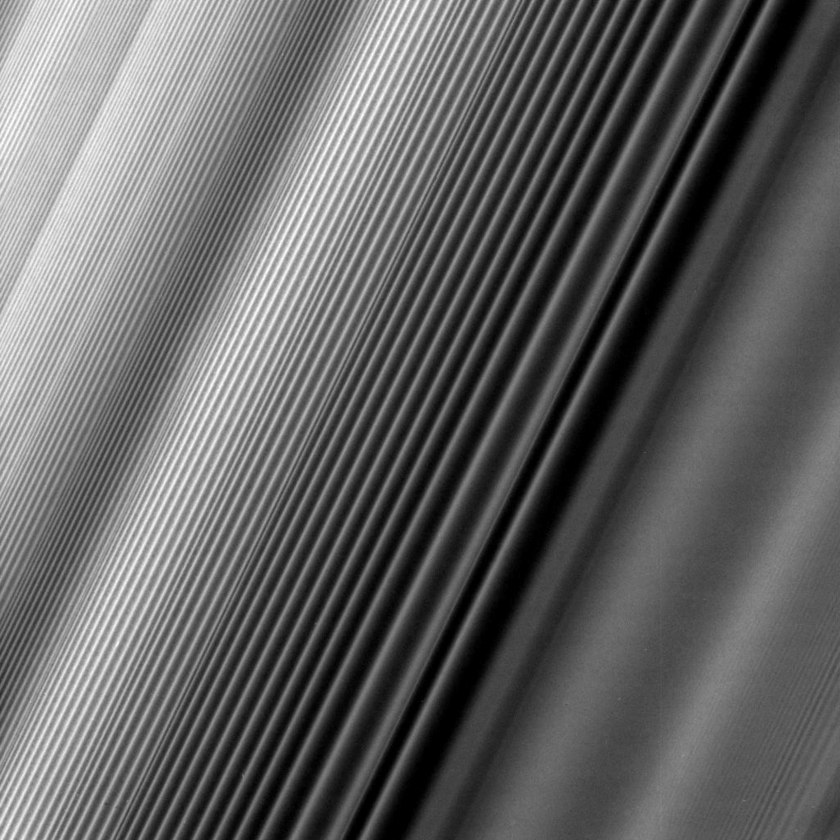
I personally think this is one of the most amazing images of the ring I've ever seen.
If I'm interpreting the image well this is similar to these roofing sheets:

Posted by: ynyralmaen Aug 9 2017, 08:19 PM
I was thinking that as the thin crescent as seen from Cassini is fully sunlit, it may be that there are more forward-scattering particles between the sunlit crescent and Cassini that there are relatively near Dione to backscatter sunlight from the daylit side as a whole. Forward scattering around the bright crescent could also explain the apparent enhanced brightness around the 7 o'clock position.
However, your point about the unilluminated portion of Dione being darker than the surrounding glow is a very good one, so yes, the source must be at least partially behind the moon.
Posted by: jasedm Aug 9 2017, 09:21 PM
If I'm interpreting the image well this is similar to these roofing sheets:

Given that the rings are reckoned to be only a few hundred metres (a kilometre perhaps) thick, my guess is that this is an optical illusion. The rings are very open currently (around 27 degrees with respect to the earth) and I'd be surprised if shadows would be cast at this angle of incidence. Different if this image had been taken around equinox of course.
Nevertheless amazingly intricate and beautiful.
Posted by: Steve G Aug 15 2017, 12:39 PM
Alas, the forum gurus are stranded on Mars!
Posted by: rlorenz Aug 22 2017, 03:58 PM
Yes, lots going on. But here's something to think about - a long shot, but skilled video astronomers and/or spectroscopists might give it a go,
and the bigger aperture the better
https://arxiv.org/abs/1708.05036
The Cassini spacecraft will enter Saturn's atmosphere on 15th September 2017. This event may be visible from Earth
as a 'meteor' flash, and entry dynamics simulations and results from observation of
spacecraft entries at Earth are summarized to develop expectations for astronomical observability
Posted by: nprev Aug 23 2017, 05:08 AM
Interesting. I don't suppose there's a ghost of a chance of getting HST time for this? Wouldn't require a long observation period, but of course the instrument's time is booked years in advance.
Posted by: Explorer1 Aug 25 2017, 02:58 AM
EOM press event schedule https://saturn.jpl.nasa.gov/news/3104/nasa-announces-cassini-end-of-mission-activities/
Posted by: wildespace Aug 25 2017, 09:08 AM
A bit of surprise astrophotography from Cassini: http://saturnraw.jpl.nasa.gov/multimedia/images/raw/casJPGFullS101/N00287662.jpg
Any idea what this object is?
P.S. It turns out to be part of a lovely panorama of the sky:
Full-size: http://ibb.co/cYz7E5
http://www.flickr.com/photos/wildespace/36792380385
Images have also been taken in IR, GR, and BL wavelengths, so I'll trust someone will create a nice, clean colour image.
Posted by: alan Aug 25 2017, 05:18 PM
If that is the Large Magellanic Cloud in the second image, the first might be the cluster 30 Doradus at the center of the Tarantula Nebula.
Posted by: wildespace Aug 25 2017, 10:35 PM
Yep, you're right, the panorama is that of the LMC.
Posted by: rlorenz Aug 26 2017, 07:58 PM
We were awarded HST time - it remains to be seen if the timing will work (HST has to be on the right side of the Earth during the entry, and ideally not in the South Atlantic Anomaly, etc.) and if the event is bright enough.
I was actually awarded HST time to observe the Huygens entry, but the STIS instrument failed between when I was awarded an orbit, and when the observation was to be implemented, so it didnt happen. There were a couple of groundbased efforts, but nothing was detected. Cassini is a rather more energetic entry, though
Posted by: nprev Aug 26 2017, 10:15 PM
Outstanding! Good hunting. ![]()
Posted by: Floyd Aug 30 2017, 11:21 AM

Information on the live Cassini Finale on NASA TV is now up.
Wednesday September 13, 1:00pm EDT, News Conference on Cassini's Final Mission Activities.
Friday September 15, 7:00-9:30am EDT, Cassini Grand Finale
Both with be available at https://www.nasa.gov/live
The web page with Cassini Grand Finale information is at this https://www.nasa.gov/press-release/nasa-announces-cassini-end-of-mission-media-activities
I assume most of us members of unmanned space flight will be watching.
Posted by: alan Aug 30 2017, 09:03 PM
Enhanced version of the cluster:
Image of Tarantula Nebula from http://eso.org/public/images/eso0005a/ rotated counterclockwise
Posted by: nprev Aug 31 2017, 02:47 AM
Sadly, I'll be working the job that pays my bills during EOM. But I think that it's not too early to express my profound admiration of and gratitude to each and every person who made this epic mission happen.
And I do mean 'epic' in the literal sense. Throughout recorded history there have been very few voyages of exploration that are even remotely comparable to that of Cassini-Huygens in terms of audacity, scope, and discovery. There's no need to recount the revelations here, not on this Forum, but suffice to say that we have all been privileged indeed to witness what Cassini has revealed.
It's been a humbling and joyous journey in every way. Deepest thanks to those who made it happen. ![]()
Posted by: jasedm Sep 7 2017, 08:42 PM
Enhanced version of the cluster
Cassini also imaged Neptune and Triton back in August:
Posted by: JRehling Sep 9 2017, 06:20 AM
There's some part of my consciousness that can't help but compare Cassini to Galileo, which was itself wonderful but, unforgettably, handicapped. Cassini's operations and its machinery were as close to flawless as a mission of this duration could be. From its arrival at Saturn till now, I've always thought of it as "an ace" and that's nothing but the accomplishment of all those people scattered far and wide who helped plan, construct, and operate the finest spacecraft that the outer solar system's ever seen.
Posted by: climber Sep 9 2017, 07:37 AM
I realize that the only piece oh human hardware left in the Saturnian system will be Huygens on Titan...
Posted by: jasedm Sep 11 2017, 04:37 PM
Cassini receives its final gravitational tug/nudge from Titan in a couple of hours time with its now irreversible consequence.
What an incredible piece of engineering. Almost flawless performance for twenty years.
The outer solar system is going to seem very distant again.
![]()
Posted by: MatthewK Sep 12 2017, 03:13 AM
I feel a bit self-conscious posting this because I lack the processing capabilities on such rich display across this forum.
Anyway, I want to say thanks to all the dedicated image tweakers for their wonderful work, which adds so much to the mission.
And I wanted to float an idea - one the last raw image has been received, I assume there will be just shy of 400 000 of them.
I've seen some evocative movies made by using the raws as frames, which I think is really compelling because the greyscale grittiness and radiation flecks make it look like a mysterious relic. (e.g. https://www.youtube.com/watch?v=OGCWA6o8LE4) But one thing which frustrates me is the strict sequential presentation so that wide angle and narrow angle images are intercut, sometimes in alternating frames, making a flashing mess, and the brightness levels jolting up and down. I know they are raw images - the latter aspect bothers me less.
What I'd like to propose is if it's possible to compile all of the RAWs into a movie, that the wide angle and narrow angle camera images (presumably separable by metadata) be presented side by side in a 2:1 overall aspect ratio. And whichever side is not being updated would just stay on the most recent image from that camera. That and a basic black point correction (lowest pixel value goes to 0, or 5, or something like that) might reduce the flashing while retaining the magic.
If anyone can point me at software I could use to do it myself, I'd be very glad to try!
Anyway - just an idea. If someone wants to use or adapt it, please do.
Posted by: bobik Sep 13 2017, 07:49 AM
and the bigger aperture the better
https://arxiv.org/abs/1708.05036
Any new info? Will there be a ground-based observation campaign with large (>1m) telescopes involved?
Posted by: JRehling Sep 13 2017, 03:59 PM
I have an outsized personal affection for Pioneer 11's flyby of Saturn. The planets from Mercury to Jupiter had all been visited at least once by 1974, but it took 4.5 more years for Saturn to get its first visit, and the images perhaps didn't do a lot for science, but it seemed like a huge jump in the reach of human exploration, with distances now measured in billions, more than doubling the last big jump. It lasted only a short time, but the pictures made magazine covers. It also hammered home that the U.S. had long since left the Soviets in the dust for this sort of thing. The strange, haunting images with the rings bizarrely different from any telescope photos planted the flag of humanity at a new, distant outpost. I don't think Voyager 2's flybys of Uranus and Neptune captured the public in the same way, perhaps because those names have never been so prominent in the public imagination; New Horizon's Pluto flyby was perhaps similar in cultural impact, making a distant world temporarily a star in the Hollywood sense. And then Pioneer 11 flew on, giving us the image of a crescent Saturn as it took the long road out of town to infinity.
Cassini, though, really has been an outpost since 2004, one of the most flawless performers in the history of robotic space exploration. The laypublic has appreciated this; Huygens is the subject of a Washington Post article even today. Perhaps the best gauge of Cassini's impact will be the vacancy it leaves. In a world where technological progress is rapid, Cassini like a few exploration programs before it is a hard act to top. It's a dare to the future to try to surpass it. It may, like Apollo, not be replaced anytime soon by anything comparable.
Posted by: propguy Sep 13 2017, 07:59 PM
Friday AM will be a very sad day for me. I started my work on interplanetary missions back in 1993 working Cassini propulsion at good old Martin Marietta (now LM). Back then a 7 year cruise to JOI seemed like forever. Now it seems like a distant memory. Having had the fortune to work 13 interplanetary mission over the years (3 currently; Juno ops, InSight ATLO, and Lucy design) I still have lots of pride and fond memories of Cassini. More than 1/2 of what I know about propulsion design and analysis I learned on Cassini (we had budget to actually look into the why of things). Doing a very long orbit insertion burn a billion miles from home was quite a challenge, but it went flawlessly. Will hopefully get together with some of the old (now mostly retired) prop team members Thursday or Friday night to raise a glass or two and hopefully meet with the old JPL prop folks next week in LA. Godspeed Cassini!
Posted by: Tom Tamlyn Sep 14 2017, 02:15 AM
Has anyone found an archive of today's Cassini press conference?
The Cassini twitter account mentions a replay, https://twitter.com/CassiniSaturn/status/908106974616633344, but that seems to have been a once only replay, not an archive. Myy old standby, space-multimedia.nl.eu.org, seems to be gone (years ago, in fact).
Posted by: Explorer1 Sep 14 2017, 02:41 AM
The Cassini twitter account mentions a replay, https://twitter.com/CassiniSaturn/status/908106974616633344, but that seems to have been a once only replay, not an archive. Myy old standby, space-multimedia.nl.eu.org, seems to be gone (years ago, in fact).
Here https://www.youtube.com/watch?v=gs-dscW95PE
Almost all the press conferences are archived on Youtube, but they don't have things older than a certain date (I wish I could watch the orbit insertion coverage, or the Huygens landing, again!)
Posted by: Tom Tamlyn Sep 14 2017, 03:13 AM
Thanks very much.
May I ask how you found it? I spent more time than I care to admit this evening trying a variety of google searches with Cassini, press conference, and youtube among the search terms, and did not turn up this video. In fact just now I googled the title of the video you linked to, "NASA Previews Saturn Mission End (news briefing)," and the video did not show up. The searches returned videos of press conferences from previous months, many articles about the end of mission, articles _about_ today's press conference, and now inactive sites that carried the press conference live, but not the video in your link. ![]()
So do I. Maybe some private archives exist whose owners could be coaxed into sharing.
Posted by: Superstring Sep 14 2017, 03:14 AM
In my view, Cassini is a defining mission for the post-Voyager generation (those of us who grew up after that epic tour). I had to write an ode to this spacecraft:
http://mannmetrics.com/an-ode-to-cassini/
Posted by: Explorer1 Sep 14 2017, 01:59 PM
May I ask how you found it?
I am subscribed to both the NASA and JPL Youtube pages, so anything new will pop up in my feed.
By the way, thanks for the link, superstring, you took the words right out of my mouth (plus I think we're nearly the same age!)
Posted by: climber Sep 14 2017, 05:48 PM
Speaking of age etc... Doug started UNMSF a few days after Spirit & Oppy landed on Mars but a mere 4 months before Cassini arrived at Saturn. I guess she performed the first important event (arrival/landing/flyby/launch) (can I say Peanuts event?) of an interplanetary spacecraft we enjoyed together. So long old friend.
Posted by: djellison Sep 14 2017, 05:51 PM
Cassini is why I took the old mer.rlproject.com URL and turned it into UMSF. And we all know how the story goes from there ![]()
Posted by: Phil Stooke Sep 14 2017, 07:28 PM
I was born before Sputnik, and though I was not really paying attention until 1968, I have pretty much seen it all. For me, Voyager takes the planetary (i.e. non-lunar) prize... there will never be another Voyager until we get a probe to another solar system. But Cassini must be a close second. The sheer variety of things it has seen, mostly for the first time, is amazing. Not that I don't appreciate all the other missions!
Phil
Posted by: stevesliva Sep 14 2017, 07:32 PM
A Neptune orbiter would be pretty sweet in the same way. Arrival could be as soon as 2042. That is only 25 years from now.
Posted by: jasedm Sep 14 2017, 08:25 PM
Phil
I was born in 1967, and started to notice in 1980 with the Voyager 1 Saturn flyby and the airing of Carl Sagan's 'Cosmos' that year.
I agree Phil that Voyager takes the laurels, with Cassini/Huygens a close second. I couldn't have dreamed of a more comprehensive reconnaissance of the Saturn system when the mission launched.
Posted by: jasedm Sep 14 2017, 09:22 PM
Interior to Dione's orbital distance now.
Posted by: belleraphon1 Sep 14 2017, 11:27 PM
Born in 1953. A time when public could still wonder about lichens on Mars and swamps or oceans on Venus. I became aware with Mariner 4 at Mars in 1965.
What a journey through a wonderland of worlds have we seen in the 50 some years since. VOYAGER gave us the introduction. CASSINI sealed the wonder at Saturn.
I will never forget the moments of discovery throughout the Saturn system, from methane storms at Titan's south pole seen in 2004, to the weird walnut shape of Iapetus on new years eve 2005.
Geysers on Enceladus, red streaks on icy moons.... mysteries to be further explored in the future. And through it all this forum UMSF. Thank you to the CASSINI team. Thank you to
UMSF for a ride with folks who love what I love.
Posted by: MahFL Sep 14 2017, 11:47 PM
Hi all. Watching here. My name is on Cassini ![]() . My night shift finishes at 6 am so I'll stop up and watch the end. ( I work from home ).
. My night shift finishes at 6 am so I'll stop up and watch the end. ( I work from home ).
PS I had a cloud free view of the Total Solar Eclipse, was awesome.
Posted by: elakdawalla Sep 14 2017, 11:58 PM
Images for the final wide angle mosaic are coming down now. I hope there are some folks here who'll work on assembling it. Looks like they shot 3 different versions, one each exposed for Saturn and the rings (RGB) and one (clear filter only) for the G ring, for a real HDR mosaic.
Posted by: Astroboy Sep 15 2017, 01:45 AM
I'm not crying, you're crying!
Posted by: Explorer1 Sep 15 2017, 02:09 AM
And with that, I realize that tomorrow morning will be tougher than I thought... this mission has been there for basically half my life. Many of you others grew up with the Voyagers, Vikings, Galileo, and others, and I will have future missions to see, perhaps back to Saturn, Titan and Enceladus, but Cassini truly bridged the generations (in so many ways!)
Posted by: tedstryk Sep 15 2017, 03:42 AM
I became old enough to kind of understand at the very end of the old era (1989, Voyager's last encounter and the Soviet planetary program's last gasp with Phobos-2), and Cassini and CRAF (it's twin, which NASA pulled out of and evolved into Rosetta) were at the time, along with a Pluto mission, the distant dreams on the horizon. Rosetta has ended, New Horizons, which I've had the privilege to be a part of, has been by Pluto, and tomorrow Cassini ends. Honestly, I feel strangely displaced.
Posted by: wildespace Sep 15 2017, 04:02 AM
The final mosaic of Saturn is being downlinked. Here's a little part of it:
NASA/JPL-Caltech/SSI/Maksim Kakitsev
Gonna be another stunning backlit view of Saturn!
Posted by: JRehling Sep 15 2017, 07:52 AM
These are the days of miracle and wonder
This is the long distance call
The way the camera follows us in slo-mo
The way we look to us all
The way we look to a distant constellation
That's dying in a corner of the sky
These are the days of miracle and wonder
And don't cry baby, don't cry
Don't cry
-Paul Simon
Posted by: climber Sep 15 2017, 08:01 AM
Don't know why, but I wake up this morning with a song already in my head that goes like this:
This is the end,
Hold your breath and count to ten,
..........
Let the sky fall....
-Adele
Posted by: jch Sep 15 2017, 10:39 AM
And how can a probe die better than facing alien worlds,
for the knowledge of its creators, and the future of next probes?
I would like to say "Thank you!" to everyone involved in this mission. Thank you - for what you did for me in last so many years.
Posted by: nprev Sep 15 2017, 10:46 AM
To die like a meteor in a blaze of glory, gracing an alien sky after a long life of discovery and wonder, is somehow fitting, even poetic.
Thank you.
Posted by: Explorer1 Sep 15 2017, 11:26 AM
Looks like the final raws are down, showing the final target....
(and a final Captain's Log from Carolyn Porco: http://ciclops.org/)
Posted by: ugordan Sep 15 2017, 11:58 AM
Thank you and farewell, Cassini.
You will be missed.
Posted by: paxdan Sep 15 2017, 12:03 PM
Thank you to the Team who built and flew the craft, and thank you to Cassini for showing us the wonders of the solar system.
Posted by: Tom Tamlyn Sep 15 2017, 12:13 PM
From Jonathan McDowell @planet4589 (via @elakdawalla)
Cassini lasted about 40 seconds longer than expected!
https://twitter.com/elakdawalla/status/908663073010941953
Posted by: mchan Sep 15 2017, 12:36 PM
Many great moments of first looks at images on UMSF. Many great images to go back to and relive those moments. Thanks NASA Cassini Team, Doug for starting this forum, and UMSF members who monitor the image feeds and post their processed versions of the images.
I started following this forum during the Huygens descent image downloads. Good to see posts from a few of the folks here in the early days of the mission. It has been a most enjoyable journey.
Posted by: Ron Hobbs Sep 15 2017, 12:42 PM
A truly awesome mission! This is humanity at its finest!
Posted by: Roby72 Sep 15 2017, 12:48 PM
https://twitter.com/elakdawalla/status/908663073010941953
I think this belongs to the transmission in S-Band...data relay was on the X-Band, which was out a few seconds earlier, but still longer than expected.
Rob
Posted by: Roby72 Sep 15 2017, 01:12 PM
Here is a nice flickr picture set what happend in the control room in the last hours (and during last days press con too)
https://www.flickr.com/photos/nasahqphoto/sets/72157686616794044/
Rob
Posted by: xflare Sep 15 2017, 03:51 PM
Is there any component of Cassini that could have survived the entry? Weird to think that there might be a tiny piece of Cassini still falling deeper and deeper through the atmosphere now. Also. with Huygens sitting on the surface of Titan for near eternity, destroying Cassini for planetary protection purposes seems.....odd.
Posted by: tasp Sep 15 2017, 04:57 PM
The plutonium fuel pellets in their aeroshells were believed to be the most 'survivable' hardware on board.
Posted by: Keatah Sep 15 2017, 05:08 PM
Titan isn't likely to have life. So it falls into a Category II mission.
https://saturn-archive.jpl.nasa.gov/faq/FAQHuygens/#q3
But when they discovered Enceladus' warm oceans they had to come up with something, hence the crash into Saturn.
Posted by: craigmcg Sep 15 2017, 05:09 PM
That question was asked at the press conference on Wednesday, and the answer was no, but as noted above the shell protecting the radioactive pieces was designed to survived potential problems during the launch, and so it would probably last the longest.
Posted by: Tom Tamlyn Sep 15 2017, 05:46 PM
Still no chance of survival. Cassini was moving at 123,000 km/hr relative to Saturn, and that's just too fast. The higher melting temperatures of the plutonium and its iridium aeroshell gave those components at most an additional minute or so of existence before their component atoms mixed with Saturn's atmosphere.
I can't locate the best of the articles that I read about this recently (it noted, for instance, that it's more accurate to describe Cassini as melting rather than burning up, because there's no oxygen in Saturn's atmosphere), but the following passage contains discussion from a late August press briefing.
"We'll reach the aluminum melting point within about 20 seconds," she said. "The iridium will be the last thing to melt, and it will go about 30 seconds after the aluminum."
As the iridium shells melt away, the plutonium inside will sprinkle across Saturn like a radioactive shooting star. However, this won't necessarily make a bigger flash.
"It's just going to melt," [Earl] Maize [Cassini Program Manager] said. "It is going to be so hot at Saturn that it will quickly dissipate ... I think any possibility of it escaping is nil."
http://www.businessinsider.com/cassini-saturn-mission-death-plutonium-238-burn-up-2017-8
One aspect of this that surprised me is how very tenuous Saturn's atmosphere is at the altitude where Cassini disintegrated. One article -- again, I can't locate it now -- said that the atmospheric pressure was equivalent to that of the environment of the International Space Station, or what would pass for a pretty good vacuum in a lab on the earth. The ISS does need to boost its orbit periodically against atmospheric drag, but its orbital velocity is much less than Cassini's entry velocity (34 km/second versus 7.6 km/second, if my math is correct). And of course the pressure that Cassini experienced was increasing rapidly.
Posted by: djellison Sep 15 2017, 05:55 PM
Possibly the INMS cover that was jettisoned after SOI many many years ago
Posted by: Tom Tamlyn Sep 15 2017, 05:58 PM
According to a thread started by Jonathan McDowell @planet4589, again via @elakdawalla:
"There is still one piece of Cassini still in orbit around Saturn: the neutral mass spectrometer cover was ejected just after orbit insertion."
https://twitter.com/planet4589/status/908667423166955520
Edit: Jinxed by Doug.
Posted by: JRehling Sep 15 2017, 06:12 PM
Even if Cassini had descended gently past atmospheric entry, there's no part of it that would survive as the craft descends into Saturn's atmosphere which, like Jupiter's, is essentially bottomless and which will eventually, at sufficient depth, turn titanium into vapor and/or gas. This was the fate of the Galileo Probe, and would certainly be the fate of any such similar descent into Saturn.
The precise sequence of destruction with atmospheric entry might be a complex, unsolved, or even unsolvable research problem. Ablation would occur, part of the design of a heat shield, but inevitably a process also with some of Cassini's innards, which weren't designed for surviving entry. It seems like a complex fluid dynamic problem. When Skylab reentered Earth's atmosphere, nobody could have predicted which chunks survived to hit Australia. How a highly complex structure comes apart under stress cannot be predictable without (or even with) destructive testing.
So I'm not sure if we'll ever know which parts of Cassini lasted till when, but it's a sure thing that it's all gas or vapor now.
By the way, I was possibly imaging Saturn at the time the plunge was beginning. I was shooting an all-sky photo to capture the Milky Way, and Saturn was a dot somewhere in the field of view, unless a tree happened to block it. I'll definitely shoot a glimpse upwards tonight, as I did last night, and contemplate the mighty Cassini that was and is no more.
Posted by: wildespace Sep 15 2017, 06:34 PM
I'm just, like, all *sniffle sniffle* I love Cassini and all the work it's done for us. Enormously huge hats off to the engineers, scientists, and mission contol members who did all this.
Cassini's Grand Finale is especially bittersweet for me as it comes the day before my birthday. Thank you for all the great images, great revelations, and great science!
Posted by: deglr6328 Sep 15 2017, 07:39 PM
Followed the charmed mission since listening to the launch on the radio in '97. Sad to see it go but it's been one hell of a ride. I remember the first 7 years of the journey to Saturn being painfully long, though the past 10 or so of its presence there have now gone by terrifyingly fast. The Huygens landing remains the pinnacle of planetary science excitement for me, and I fear its fantastic wonder may never be equaled in my lifetime. Even though I post like once every 3 years now, glad to see this site still going, albeit not nearly with the level of activity of its heyday 8 years or so ago. I do not see many missions in progress or on the horizon having nearly the level of grandeur of our now largely complete initial survey of the solar system, but will stop by here from time to time nonetheless and hope to see that things are still marching along. till then...
Posted by: JRehling Sep 15 2017, 09:27 PM
In reference to past missions, and what we've lived through, it is perhaps obvious but must be stated in respect to the greatness of this board and those who run it…
The first big mission I was old enough to remember was Viking. And Viking was a masterpiece – four craft exploring the heck out of the most interesting planet and one really can't imagine the technology of the time doing it any better.
But my main source of Viking info was National Geographic and "year books" that supplemented encyclopedias. Occasionally, something would make the print or TV news, but the information cycle for me was more typically one year. Then a book summarizing the main mission might make it into my hands. Viking happened "while" I was alive and waiting for the results, but it wasn't all that different from reading about something that had happened in the 18th century. There was a before and an after, but no during. Likewise Pioneer Venus and Voyager at Jupiter. By the time of Voyager at Saturn, I was subscribed to publications that shortened the news cycle considerably, but it was rarely under a week.
In sharp contrast to that, I remember chatting live here about the first ISS pictures of Titan and manipulating them in Photoshop and having the real sense that I might be seeing something before anyone else ever had… and if I weren't first, I was certainly no more than minutes behind whoever was. Then, when Huygens arrived, a day when I shamelessly did no work at work, the fact that the first image was one of drainage channels in the headlands – unbelievable! And the descent more or less happened here in real time (plus some speed-of-light, downlink, etc. delay), with commentary (and sometimes it's well that interested amateurs are game to speculate more than a publishing scientist should). Viking happened in my lifetime, but Cassini and Huygens happened and were experienced here. And for the life that this provides the flow of information, I am tremendously grateful.
Posted by: Bjorn Jonsson Sep 16 2017, 12:08 AM
Cassini has been an awesome mission that I have been following closely since several years before (!) it was launched. I remember the launch back in 1997 as if it was yesterday and ditto for SOI, the Huygens landing and various other events and mission highlights.
I have mixed feelings about how the missions ended. I really like missions to end like Messenger and Venus Express, i.e. to keep going until the fuel is completely exhausted. On the other hand, ending the mission with an atmospheric entry yields valuable data that could not have been obtained by completely spending all of the fuel.
Ranking planetary missions by success is very difficult (and highly subjective) but it is my opinion that the Cassini-Huygens mission is the second most successful planetary mission ever flown; closely behind Voyager.
Posted by: Keatah Sep 16 2017, 12:52 AM
They essentially did just that. Down to 1 or 2 percent fuel remaining. They probably could have gotten a few more Revs, but definitely not enough to start a new science campaign or segment/mission.
This Grand Finale should complement what Juno is doing at Jupiter. I'm surprised that so few people see (or don't bother to mention) the added value from such a comparison between the two datasets.
Posted by: J.J. Sep 16 2017, 01:02 AM
Congratulations to everyone on the Cassini team for bringing such a marvelous and inspiring mission to the public!
Posted by: Bill Harris Sep 16 2017, 01:08 AM
I wouldn't rank missions. Each mission returns data and is a success that stands on its own. And each mission serves as a basis or a foundation for future missions.
--Bill
.
Posted by: djellison Sep 16 2017, 01:38 AM
So - there was a non zero chance that they would have run out of fuel before the proximal orbits were finished. Hence the drop dead simple plan that set it up all the way back in April - concluding with that one Titan flyby earlier this week that dropped periapsis into Saturn. It was a very elegant (and safe for planetary protection) mission design.
They really left nothing on the table.
Posted by: NMRguy Sep 16 2017, 03:56 AM
Many thanks to the science and engineering teams that designed, delivered and kept this mission running so well for so long.
Cassini-Huygens was truly a mission of discovery. Cassini's Jupiter flyby delivered the full promise that Galileo could have provided, and then the Saturn primary mission yielded exhilarating exploration, including the early Phoebe encounter, Saturn orbit insertion, Huygens landing on Titan, radar and VIMS imaging of the Titan surface, Enceladus geysers, the Iapetus equatorial mountain ridge, and the Grand Finale Juno-like investigation of the giant planet, just to name a few.
While we all knew this day would come, it is a bittersweet passing onto a different, post-Cassini era.
Posted by: marsbug Sep 16 2017, 08:37 AM
The last 13 years have been amazing - it's been a great honour to be alive to witness them - and I'm sure there are many more discoveries lurking in the archived Cassini data. My heartfelt thanks to everyone who worked on the mission. May future exploration efforts do its memory justice.
Posted by: Astroboy Sep 16 2017, 05:30 PM
As an archivist, history buff and a fan of vintage electronics, I'm mainly interested in the older missions, i.e. anything that carried a vidicon and a tape recorder and became one of the first couple spacecraft to encounter a specific planet or moon. As a 23 year old, I never got to experience any of them in real time (besides Voyager's interstellar journey), which saddens me. However, when I read recollections such as JRehling's - that for the public during the '70s, there was often just a before and an after, with no live experience like you'd get with a '60s Apollo mission - I am brought back to stark reality.
Cassini though? Cassini felt like an idealized version of those formative missions, and that has caused me to grow very fond of it and regard it as one of my favorite modern missions. It was like being able to follow, in real time, a Mariner or a Voyager that lasted a really long time, never chronically malfunctioned, and had a perfect suite of instruments, including some successors to Voyager hardware (like RPWS). Every flyby of a moon and every revolution in general felt like an event - like a Mariner or Voyager flyby. Having access to stuff like NASA's Eyes and being able to see the raw images as they came down really enhanced that "event" feeling. I think Cassini is as much of a successor to those old missions as New Horizons is.
All things must come to an end, though, and this was the perfect ending. The death plunge kept it from slowly dying and then becoming paper weight in a derelict orbit - it performed flawlessly until the very end, it became a part of Saturn in the process, and some interesting atmospheric science will probably come out of it. Many, many thanks and congratulations to all the champs on the Cassini team, and like others, I am very grateful for their openness to the public that allowed us to experience the mission as it happened. I hope someday we'll get to see a successor to this magnificent machine at Uranus or Neptune.
Posted by: Gladstoner Sep 17 2017, 05:09 AM
It may have been mentioned already, but Cassini's entry marks the point when all five classical planets have been directly touched by humanity. I wonder what the ancient astronomers would think.
Posted by: jasedm Sep 17 2017, 11:06 PM
They really left nothing on the table.
I agree - the trajectory design and execution for the proximal orbits (as for the whole mission) was beautiful.
Interestingly, this excerpt is from one of the significant events report from SEVEN years ago:
"The results of a study of maneuvers near end of mission were presented at the Mission Planning Forum this week. The topics were the delta-v impact of accidental burn-to-depletions and a possible planned burn-to-depletion near the end of mission. An accidental burn-to-depletion occurs when either insufficient fuel or oxidizer remains to produce the thrust level required during a main engine maneuver. The study looked at the delta-v impact of completing the interrupted maneuver at a later time using hydrazine and the RCS thrusters. A planned burn-to-depletion concept was also discussed in the event that bipropellant remains at the very end of the mission. This burn, if performed, would be done during the last proximal orbit to determine how much usable propellant remained in the tank. The study identified times during the last orbit where the burn could be performed and impact into Saturn's atmosphere would still be assured. There are many issues to consider for both of these concepts and the topic will be studied in more detail when the project looks to plan the later segments of the mission."
I don't know why a planned burn-to-depletion wasn't performed in the end - perhaps to allow for the possibility of a clean-up burn if something went awry with the penultimate/final Titan flybys?
It's the end of an era, and there's a Cassini-sized hole in UMSF.................soon to be filled by; Osiris-Rex, New Horizons at 2014MU69, the JWST, Hayabusa2 and so on...
Lots to look forward to!
Posted by: toddbronco2 Sep 18 2017, 01:55 AM
The Prop team wanted to perform a "burn to depletion" all the way until the end of the mission, but that was vetoed years ago. The logic at the time was that it wasn't worth the risk to the INMS plunge science to perform the engineering test. There was also some nebulous concern about instrument contamination. If you burn to depletion then you will run out of either fuel first or oxidizer first and whichever one is left will then vent unburned as a cold gas thruster. There was some concern that the unburned fuel or oxidizer might coat or contaminate the science instruments.
There were a whole bunch of engineering tests that were seriously and jokingly suggested: jettisoning the ME cover to test if the unused pyros still functioned, performing a burn with the unused backup Main Engine, etc
Posted by: JRehling Sep 18 2017, 03:13 AM
Some calendrical bits of trivia that I find jarring: Cassini was launched only 11 months after the launch of Mars Global Surveyor, three years after the end of Magellan, and less than 2 years after the arrival of Galileo at Jupiter. The first pair is perhaps most significant, because Cassini was, in some estimations, the last hurrah for big "Battlestar Galactica" missions and MGS was an early exemplar in the faster, better, cheaper (FBC) paradigm that the failure of Mars Observer, a sort of Cassini-for-Mars, ushered in.
I can't help but think of how unfortunate it was that all of Cassini-Huygens' discoveries came too late for Carl Sagan to enjoy them. The initial reconnoissance of the solar system's major worlds was nearly complete when he died in 1996, but when one thinks of Titan and Pluto, it feels as though the solar system kept much of the best for last.
Posted by: stevesliva Sep 18 2017, 02:15 PM
The mention upthread of just-in-case-pyros for the main engine cover and the SPARE main engine had me chuckling about the battlestarness of Cassini.
Posted by: jasedm Sep 18 2017, 06:47 PM
Thanks Todd for the insights.
It would be interesting to hear some more of the engineering tests that were vetoed (crazy or otherwise)
Posted by: JRehling Sep 18 2017, 08:34 PM
This juncture might be a time to remember that extended mission concepts once proposed for Cassini included going into Titan orbit or leaving Saturn orbit and journeying to Uranus. It sounded like the first was infeasible and the second simply unwise.
Posted by: Explorer1 Sep 18 2017, 11:52 PM
Yep, I remember the idea of Cassini ending up in Titan orbit from both a Stephen Baxter novel, and some speculation on how it could be accomplished in this very forum, circa 2004! ( http://www.unmannedspaceflight.com/index.php?showtopic=559 ). I still do wonder how plausible the main antenna as a heat shield would be...
Posted by: stevesliva Sep 19 2017, 01:48 PM
I think the Saturn orbits >>> Uranus flyby.
If we don't get an ice giant orbiter, though, we damn well better get a couple flybys!
Posted by: JRehling Sep 19 2017, 03:20 PM
I don't think the Uranus option ever made much sense. It would have cost a lot of Saturn science and created a huge and risky delay before arrival at Uranus. If anything, it was more of an impressive statement of possibilities.
Of course, in some alternate reality, alternate versions of us in 2029 will say, "Wow, if Cassini hadn't been sent to Uranus, we never would have known about _______!"
Posted by: jasedm Sep 19 2017, 08:08 PM
Agreed.
I think the right decision was made - a 'free' atmosphere probe at Saturn (although not optimised as such) will surely pay dividends. With Uranus' axial tilt also, flyby science would have been shoehorned into the relatively brief period a couple of days either side of closest approach.
It's more than a pity however that an almost perfectly-operational spacecraft had to be disposed of for want of fuel. As ever, it's all in the delta V....
Posted by: Explorer1 Sep 19 2017, 08:25 PM
During the finale coverage, one member of the team (I forgot who) said that another possible alternative for disposal would have been an orbit far beyond both Enceladus and Titan. It may have been possible, but all the good science is of course in the centre of the system, so they decided to follow the science.
Sure, a few flybys of the irregular moons would have be good, along with plasma and dust science, but they balanced that against the ring and atmosphere science (we'll see what is recovered from the final dive)
See slide 19 here: http://www.lpi.usra.edu/opag/march_08_meeting/presentations/spilker.pdf
Posted by: atomoid Sep 20 2017, 01:29 AM
gif anim of the parting https://saturn.jpl.nasa.gov/raw_images/426408/ from September 13
Posted by: Ian R Sep 29 2017, 02:01 AM
My pictorial tribute to our dear and departed robotic friend ....
https://flic.kr/p/YyAFcE
https://flic.kr/p/YyAFcE by https://www.flickr.com/photos/10795027@N08/, on Flickr
Posted by: Explorer1 Nov 22 2017, 04:02 AM
The CICLOPS team version of the final mosaic: http://ciclops.org/view/8631/A-Farewell-to-Saturn
Farewell...
Powered by Invision Power Board (http://www.invisionboard.com)
© Invision Power Services (http://www.invisionpower.com)
